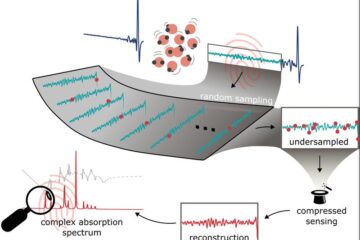University of Arizona scientist shares in discovery of microbe filaments' power

The team of researchers, including Magdalene “Maggie” So, a member of the BIO5 Institute and the department of immunobiology in the UA College of Medicine, studied Type IV pili – or filaments – on the surface of Neisseria gonorrhoeae, the bacterium that causes the infectious disease gonorrhea.
The research results help them understand the role that Type IV pili play in initiating a variety of infectious diseases – including tuberculosis – and how retracting pili allow bacteria to crawl and to exchange genes with each other.
When a bundle of Type IV pili retracts, it pulls with a force in the nanoNewton range, which is 10 times the force of a single retracting filament. The study demonstrates the power and cooperative nature of the nanomotors that cause Type IV pili to retract.
“The motor that causes these filaments to pull is one of the strongest nanomotors known in biology,” So said.
In previous studies, the same group of investigators measured single filament retraction forces in the 50 to 100 picoNewton range. This force allows the bacterium to move an object 10,000 times its own body weight. Retraction forces from a bundle are roughly 10 times higher, allowing the bacterium to move objects 100,000 times its body weight.
Pilus retraction forces are an important factor in how N. gonorrhoeae starts an infection. So, who has studied these microbes for more than 20 years, says N. gonorrhoeae communicates with a human cell by pulling on it. These pulling forces perturb the normal circuitry of the cell. As a result, the infected cell is fooled into lowering its defenses against the infecting microbe.
So said that the team of investigators came up with a new method to measure the tremendous forces applied by retracting pili. They allow bacteria to sit on a dense brushwork of tiny elastic pillars. The pili attach to these pillars. When pili retract, they bend the pillars. By measuring how the pillars bend, the investigators calculate the retraction forces.
Media Contact
More Information:
http://www.arizona.eduAll latest news from the category: Life Sciences and Chemistry
Articles and reports from the Life Sciences and chemistry area deal with applied and basic research into modern biology, chemistry and human medicine.
Valuable information can be found on a range of life sciences fields including bacteriology, biochemistry, bionics, bioinformatics, biophysics, biotechnology, genetics, geobotany, human biology, marine biology, microbiology, molecular biology, cellular biology, zoology, bioinorganic chemistry, microchemistry and environmental chemistry.
Newest articles

How evolution has optimised the magnetic sensor in birds
The magnetic sense of migratory birds is probably based on the protein cryptochrome 4, and a genetic study has now provided further support for this theory. A team of researchers…

Molecular Fingerprint Beyond the Nyquist Frequency
Ultrafast laser spectroscopy allows the ascertainment of dynamics over extremely short time scales, making it a very useful tool in many scientific and industrial applications. A major disadvantage is the…

High-energy-density aqueous battery based on halogen multi-electron transfer
Traditional non-aqueous lithium-ion batteries have a high energy density, but their safety is compromised due to the flammable organic electrolytes they utilize. Aqueous batteries use water as the solvent for…





















